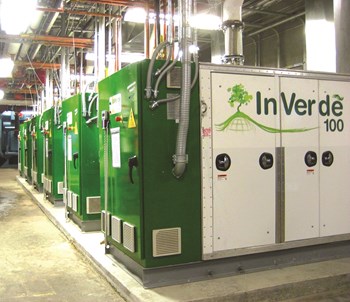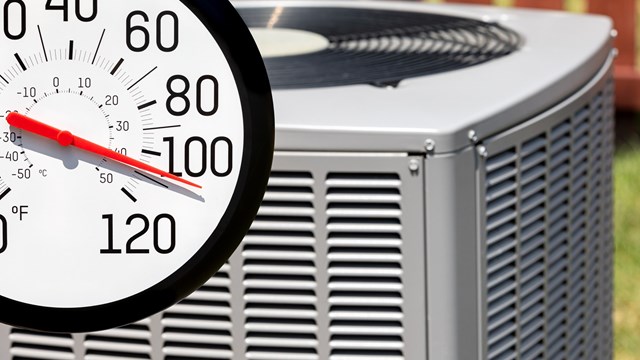
The process of producing energy to metropolitan condos and co-ops has dramatically evolved in recent years. It's advanced to the point in which Lewis Kwit, the president of Energy Investment Systems in New York City, makes a relatively accurate—and amusing—comparison. “The old way of using a traditional energy-producing system is like using a chainsaw to cut butter,” he says with a chuckle.
Specifically, though, what are these new energy-producing technologies? Can they save money long-term and short-term, for a co-op, condo or an HOA? How can they be acquired when it seems, quite literally, as if major commercial energy suppliers are the only option available? Some communities are exploring these questions and coming up with solutions that are saving them both energy and money.
In the Chicagoland area, many co-ops and condos receive energy from Commonwealth Edison (ComEd), which supplies both distribution and wiring. As Chris Gersch, founder of Chicago-based energy consultant firm Verde Solutions, explains, the city has a near-even split of use between coal and nuclear power, with less than 5 percent carved out for wind.
"In Illinois, we use Wyoming coal, because the in-state supply is too dirty," he says. "Exelon [the largest operator of nuclear power plants in the United States, and headquartered in Chicago] has a bill in the Illinois General Assembly to bail out several of its plants. But, with that said, coal is expensive and not environmentally friendly, while nuclear is taboo and in need of reinvestment." As of June 2015, the bill was unlikely to pass legislative muster in Springfield and may lead to the closure of several of its plants.
So it seems as if the time is ripe to explore some alternative options.
Some Definitions
For those not in the know, co-generation is the use of natural gas-fueled energy to create electricity, and is oftentimes called combined heat and power (CHP) because it delivers two forms of energy: electricity and hot/chilled water. By definition, co-generating buildings produce a portion—sometimes a larger portion, sometimes smaller—of the energy required to operate on their own with the appropriate equipment, relying on major suppliers only for the balance of what they cannot produce. Sometimes, they even sell surplus energy back to the suppliers, making a profit from their efficiency.
In reality, co-generation has existed for decades; it has, though, required time to gain support and visibility. In fact, many people aren’t fully aware that the technology still exists today. According to representatives at the Environmental Protection Agency (EPA), “Combined heat and power technologies are efficient and clean approaches to generating electric power and useful thermal energy from a single fuel source. Combined heat and power is used either to replace or supplement conventional separate heat and power (SHP).”
Kwit explains how, in a traditional system, water is heated into steam which turns a turbine at an extremely high speed with a magnetic source in order to generate electricity. In these systems, most of the heat is wasted, heading up the smokestacks or—sometimes—into the river, increasing environmental concerns.
To better understand CHP energy, Kwit explains, “It takes one British Thermal Unit (BTU),” he says. “It is like lighting a match, and in a traditional system, it takes 11,450 BTU to create 1 kW hour of electricity; however, in a co-generation unit, it would require 3,412 BTU’s for the same amount of electricity.” This is due to higher efficiency and lack of wastefulness.
A co-generation unit is smaller, and the technology recaptures the heat, and the energy is used for thermal purposes, like heating water and warming units in the winter season. Because electricity is fed into the building, the process lowers the electric bill for each unit, which in turn reduces greenhouse gas emissions.
“It is more efficient than traditional power companies because there is not as much wasted energy,” says Kwit. “The hot water is pumped into the office…not fed out of cooling towers, like with many traditional energy plants.”
Wastewater treatment plants are an example of CHP systems. Such factories offer alternative power sources with a higher efficiency factor. These systems are used to supplement a traditional, local power company, also saving a resident on electricity costs and reducing negative environmental gas emissions.
Benjamin Locke, CEO of Tecogen, a national CHP technology manufacturer that installs and maintains high efficiency, ultra-clean combined heat and power products, says buildings that use a lot of hot water are best suited for a CHP system. “For example, an office building, not a lot of people take showers in an office building. But a large residential building, people take showers and do laundry, that’s a great candidate,” he says. Larger hotels, health care facilities, and athletic clubs would also benefit immensely from CHP systems. “Everybody needs electricity, but you’re also making hot water because you’re capturing all the heat that’s generating when this engine’s running,” says Locke. Instead of wasting that energy like cars do through the tailpipe, it’s conserved and used in the form of hot water.
However, residential units are choosing this type of energy source more frequently, as well. One drawback to combined heat and power systems, currently, is a greater upfront cost, posing financial challenges for condos and co-ops. Of course, over time, savings do occur quite extensively.
As Gersch explains, co-generation can offer price protection in the long term, and will protect a community from certain regulatory laws, power plant closures and commodity-based rate hikes. In the short term, efficient technologies can add marketing value to a property, as well as immediate reduction in overhead costs. "Many of our co-generation partners specialize in low- to no-cost projects," says Gersch. "Many of the co-generation plants—especially solar—have 20-year warranties."
“When power comes from off-site, you're only getting about 30 percent of the generated electricity at your plug,” says Stuart E. Weidie, president and chief executive officer for Blossman Gas, Inc., an energy supplier. “More than 30 percent of the energy is lost in production, and still another 30 percent is lost in transmission over power lines."
In order to host a CHP energy system, a building requires—quite simply—a natural gas supply, a chimney (or some exhaust source for the heat production) and the unit itself.
The idea behind combined heat and power is self-sufficiency; a resident or building can have a semi- self-sufficient unit or an entirely self-sufficient unit. As CHP is designed for buildings where there is a need for both electricity and hot water on site, some buildings may not need hot water. Again, while the cost over time is less expensive than that of traditional technologies, there is a high upfront cost in this type of energy.
The upfront cost is the primary reason that clients hesitate when considering adopting co-generation, in Gersch's experience. "To give but one example," he says, "were a building owner required to install a new roof in order to effectively and safely switch to solar energy, but the owner had not considered nor planned to re-do the roof already, that upfront cost could sway them from converting."
Savings You Can See
In a study by New Jersey-based Rutgers University, a cost/benefit analysis shows a 75 percent overall efficiency of combined heat and power, versus the 51 percent of traditional; these statistical findings have the strong potential to directly and significantly impact condo and co-op monetary savings. According to Tecogen.com, “This same efficiency gain with combined heat and power is what helps an end-user cut his utility bills significantly…as much as 50 percent."
Today, more and more buildings are using the technology, and the numbers in Chicago continue to grow each year. Co-generation is here to stay, it seems. Specifically, according to Green Crown Energy, the United States aims to have “20 percent energy efficiency by co-generation by 2030.”
"Factors like the Clean Jobs Bill in the Illinois Senate are going to help solar and wind power explode in the Midwest over the next few years, "according to Gersch. “We've seen massive growth happen on the east and west coasts, but, thus far, the Midwest has trailed behind. However, Minnesota is making gains, with states like Iowa, Indiana, Ohio and our own Illinois not far behind."
Wesley Strickland is a freelance writer and a frequent contributor to The Chicagoland Cooperator. Staff writer Michael Odenthal contributed to this article.






Leave a Comment